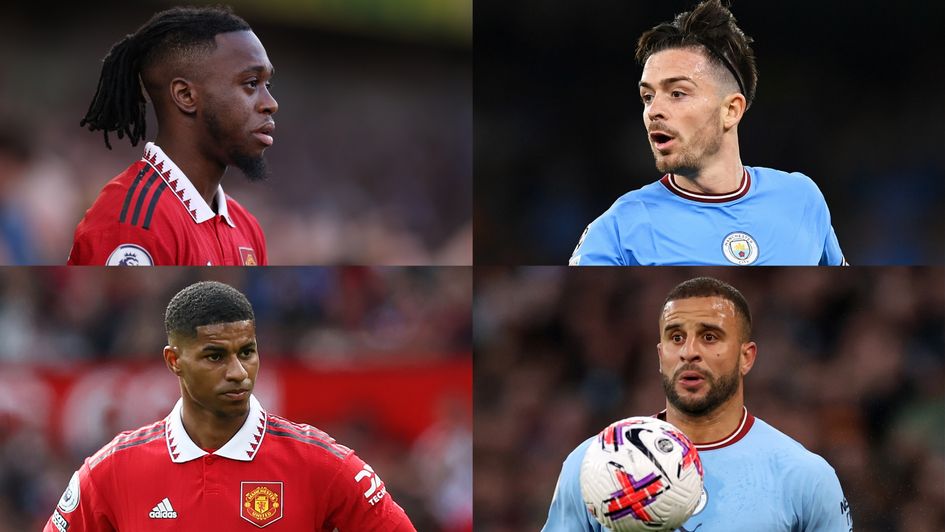The first-ever FA Cup final between Manchester United and Manchester City has more riding on it than simply who wins the trophy.
It is a sad indictment of modern football, of the closed shop at the top and fading prestige of the FA Cup, but nevertheless intriguing that while City expect to collect the middle piece of a treble, United are desperate to stop their rivals from mimicking their 1999 feat.
Pep Guardiola’s side are clear favourites and yet Man Utd, who have won four consecutive matches, were 2-1 winners at Old Trafford in their most recent meeting in January.
Man City in particular have changed considerably since that game, which in the midst of their post-World Cup funk was defined by weary passing and sloppy counter-pressing, but nevertheless both managers will be pouring over footage from that game to find a tactical edge.
United’s January win sets the tactical tone
In broad terms the FA Cup final will follow a similar tactical pattern as their last encounter. Erik ten Hag instructed his team to sit off in a narrow 4-2-3-1 formation defined by an absence of pressing, man-to-man marking in central midfield, and quick long-ball counter-attacks funnelled through Bruno Fernandes.
United didn’t park the bus, but rather held a compressed midblock that looked to squeeze out space for Man City’s midfielders to get on the ball, while the runs of Marcus Rashford and Anthony Martial were constantly sought out by Fernandes. It was a simple approach but a very effective one: the hosts created several big chances in the first half and then scored two goals in the transition, their counter-attacking system renewed by the introduction of Alejandro Garnacho from the bench.
But Ten Hag’s side were assisted by tactical mistakes that Guardiola will not make again. He deployed traditional over-lapping full-backs throughout the first half, meaning no extra midfielder to support Rodri (hence Fernandes finding the space he needed to ping balls over the top) and no extra centre-back to get tight to Rashford’s runs off the left.
Guardiola partially corrected this error in the second half, moving Joao Cancelo into central midfield, but it proved too late, especially with Bernardo Silva operating as one of the number eights.
On Saturday, United will again concede territory and possession. We know the pattern of the contest, but with Man City now regularly deploying a ‘W-M’ 3-2-2-3 formation, Guardiola has a system that plugs the gaps Ten Hag exploited in January.
In a tight game defined by United slowing things down and biding their time, here are the battles that will decide the FA Cup final:
Avoiding the Walker trap
By the end of their last meeting Ten Hag had Garnacho, Rashford, and Anthony on the pitch, going aggressively all-in on the fast counter-attacking method to take advantage of City’s sluggishness and high defensive line. He will almost certainly be equally emboldened this time.
Anthony Martial’s injury makes Ten Hag’s team selection interesting, and in fact could help Ten Hag avoid his best attacker Rashford being stifled in a race with Kyle Walker.
With Rashford playing as a centre-forward there is space on the left, where Ten Hag has recently experimented with a variety of different players including Fernandes and Jadon Sancho.
Perhaps, with Sancho scoring and assisting in his last two but more comfortable on the right, Ten Hag will put Sancho on his natural side and Fernandes on the left, where he can drift centrally to pick up the ball in the transition.
With Rashford instructed to lean right, United could then avoid the Walker trap altogether.
De Bruyne could escape Fred again
In their last meeting, Fred was deployed as a third central midfielder to improve United defensively, and as United went man-to-man in midfield the visitors were kept quiet for most of the match.
However, once Cancelo moved into the middle for the second half Kevin de Bruyne was freed to go high and wide to the right. He lost Fred to assist Man City’s opener.
It will be very difficult for Man Utd to prevent this happening again, although with Luke Shaw at left-back (rather than centre-back) they ought to be a little more secure this time.
Certainly Ten Hag will need a specific plan for how to deal with the way De Bruyne makes under-lapping runs to combine with Riyad Mahrez. If he can work this out, he will be doing every Premier League manager a favour.
Big test for Wan-Bissaka
Jack Grealish scored within three minutes of coming off the bench at Old Trafford.
Since then he has been in incredible form, with 15 goal contributions in the second half of the season. He has finally found a way to use his old swagger from within the Zraints of Guardiola’s system, dribbling with purpose and riding challenges better to open up space.
His direct opponent on Saturday is Aaron Wan-Bissaka, enjoying a return to form of late and starting each of Man Utd’s last four games at right-back.
He has always been a very confident one-on-one defender, and with United sitting back (Wan-Bissaka will not be expected to get forward in this game) he is arguably the perfect player to stick tight to Grealish and win tackles – beginning a counter-attack.
